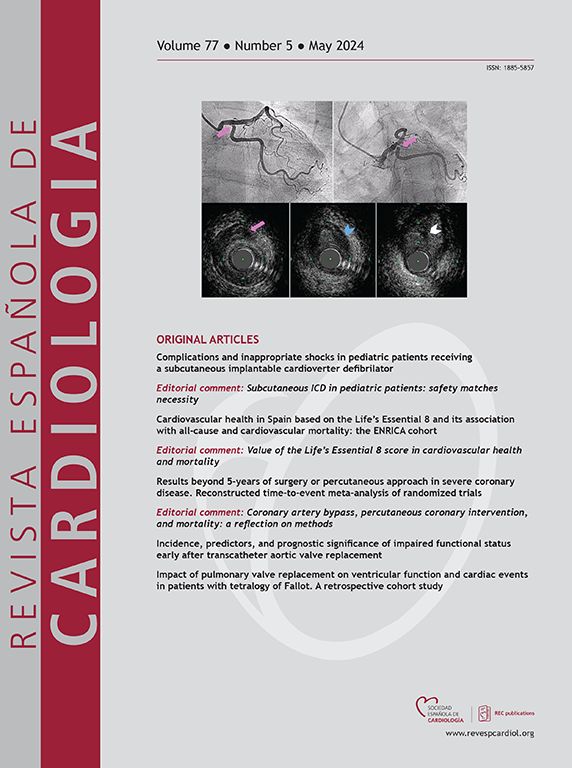感染性心内膜炎:尽管医学进步,但威胁日益增加。看看西班牙的趋势
IF 5.9
2区 医学
Q2 Medicine
引用次数: 0
摘要
感染性心内膜炎(IE)是西班牙乃至世界范围内严重的公共卫生问题。本研究旨在分析1992年至2021年西班牙IE发病率的趋势。方法我们使用来自全球健康数据交换的IE发病率数据和来自西班牙国家统计局的人口数据来分析年龄标准化发病率的变化。采用结合点和年龄-时期-队列(A-P-C)模型来确定显著的趋势变化和年龄、时期和出生队列的影响。结果男性IE的年龄标准化发病率从1992年的17.5 / 10万人增加到2021年的30.8 / 10万人,女性从1992年的16.8 / 10万人增加到2021年的22.9 / 10万人。联合点分析显示了明显的趋势变化,男性的增长率(1.9%)高于女性(1.1%)。男性与女性的发病率比达到1.4,表明男性患IE的风险更高。IE的发病率受年龄、时期和队列的显著影响。随着年龄的增长,男女患病风险都在增加。20世纪末和21世纪初出生的女性与早期人群相比,风险增加。在这些后期的队列中,男性的风险有所降低。从20世纪90年代到21世纪头十年中期,经期效应有所增加,然后下降,尤其是在男性中。结论:本研究显示西班牙IE发病率显著增加,尤其是老年人和男性。这些趋势反映了人口变化、医学进步和不断变化的风险因素。本文章由计算机程序翻译,如有差异,请以英文原文为准。
Endocarditis infecciosa: una amenaza creciente a pesar de los avances médicos. Una mirada a las tendencias en España
Introduction and objectives
Infective endocarditis (IE) is a serious public health problem both in Spain and worldwide. This study aimed to analyze the trends in the incidence of IE in Spain from 1992 to 2021.
Methods
We used IE incidence data from the Global Health Data Exchange and population data from the Spanish National Statistics Institute to analyze changes in age-standardized incidence rates. Joinpoint and Age-Period-Cohort (A-P-C) models were applied to identify significant trend changes and the effects of age, period, and birth cohort.
Results
The age-standardized incidence rates of IE increased from 17.5 cases per 100 000 population in 1992 to 30.8 per 100,000 in 2021 among men and from 16.8 per 100 000 in 1992 to 22.9 per 100 000 in 2021 among women. Joinpoint analysis revealed distinct trend changes, with men having a faster rate of increase (1.9%) compared with women (1.1%). The male-to-female incidence rate ratio peaked at 1.4, indicating a higher risk of IE among men. The incidence of IE was significantly influenced by age, period, and cohort. Both sexes showed increasing risk with age. Risk increased in women born in the late 20th and early 21st centuries compared with earlier cohorts. Men in these later cohorts showed a decreasing risk. Period effects increased from the 1990s to the mid-2000s and then declined, especially among men.
Conclusions
This study reveals a significant increase in the incidence of IE in Spain, especially among older adults and men. These trends reflect demographic changes, medical advances, and changing risk factors.
求助全文
通过发布文献求助,成功后即可免费获取论文全文。
去求助
来源期刊

Revista espanola de cardiologia
医学-心血管系统
CiteScore
4.20
自引率
13.60%
发文量
257
审稿时长
28 days
期刊介绍:
Revista Española de Cardiología, Revista bilingüe científica internacional, dedicada a las enfermedades cardiovasculares, es la publicación oficial de la Sociedad Española de Cardiología.
 求助内容:
求助内容: 应助结果提醒方式:
应助结果提醒方式:


